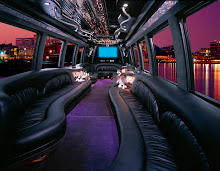A limousine is generally an extended sedan, and this extension is specifically designed to allow for extra space and leg room in the passenger seats, however the extension usually goes far beyond that simple capacity.
Many luxury limousines include such amenities such as drink bars, refrigerators, televisions, and sound systems. These specially-designed vehicles are not made only from sedans, either, as recently many new designs of limousines have been hitting the streets, with everything from extended black SUVs to dependable off-road types like the Humvee.
Whenever you're driving, or at the backseat of the vehicle, difficult handling, a rough ride, vibration and poor performance are the kinds of symptoms you feel sometimes. When the driving experience doesn't feel quite right, be on the lookout for some signs of vehicle wera and tear, and learn the methods needed to effectively sort out and repair the quirks in a limousine.
How To Effectively Troubleshoot A Limo's Technical Problems
There are many aspects you need to fully learn, in order to prevent seeing further damage to your vehicles' many technical and machine components. Let's start with the limo's engine. It may be time to call in the repair men whenever you feel symptoms such as difficulty starting the engine, rough idling or stalling, poor acceleration, poor fuel economy, excessive oil use (more than one quart between changes), or when the "check engine" light on the instrument panel is lit
the transmission, poor performance may come from actual component failure or a simple disconnected hose or plugged filter. Make sure that the technician checks the simple items first; transmission repairs are normally expensive. For steering wheel problems, experiencing difficulty steering in a straight line can be probably caused by misaligned front wheels and/or worn steering components such as the idler arm or ball joints.
The limo's tendency to steer to the left or right, can be caused by something as simple as under-inflated tires, or as serious as a damaged or misaligned front end. For ride and handling issues, worn-out shock absorbers or other suspension parts can contribute to poor cornering characteristics. Also check for proper tire inflation. While there is no easy rule about when to replace shock absorbers or struts, do this test: bounce the vehicle up and down hard at each wheel and then let go.
See how many times the vehicle bounces. Weak shocks will allow the vehicle to bounce twice or more. Overloading your vehicle may also damage your springs. Vehicle tires always should be properly balanced. An unbalanced or improperly balanced tire will cause the vehicle to vibrate and may prematurely wear steering and suspension components.
Steps Needed To Avoid Costly Repairs
One of the best methods of keeping a limousine in constant good shape, is to follow the respective limo manufacturer's maintenance schedules, by checking out your owner's manual. However, if you do not have an owner's manual, try calling the manufacturer to obtain one, or ask for a recommended maintenance schedule.
Some repair shops create their own maintenance schedules, which sometimes requires more frequent servicing than recommended by the manufacturer. Try to check and compare shop maintenance schedules with those written in your owner's manual. Ask the shop to explain, as well as make sure you understand why it recommends service beyond the usual recommended schedule.
Vanessa Arellano Doctor
Tuesday, December 25, 2007
How Often Should You Have Your Limousine Tuned Up?
Subscribe to:
Post Comments (Atom)

No comments:
Post a Comment